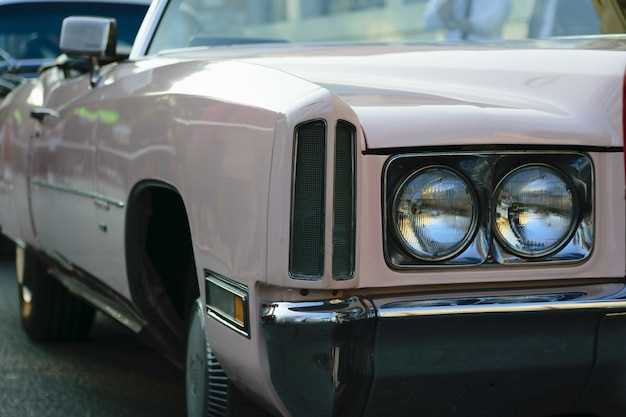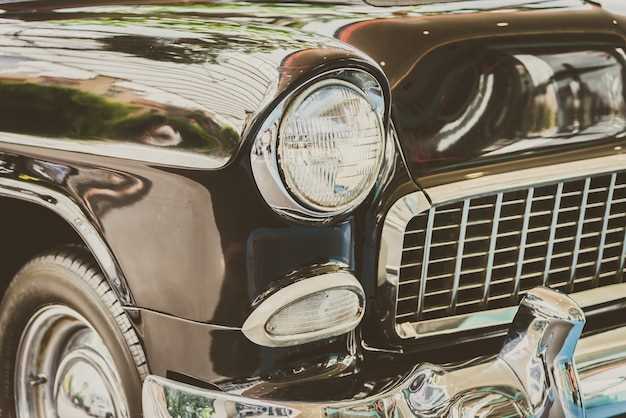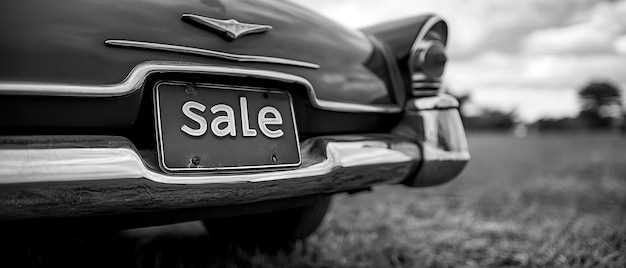Top 10 Mistakes When Buying a Vintage Car

Purchasing a vintage car can be an exciting and rewarding experience, yet many buyers often find themselves making critical mistakes that could lead to costly consequences. Understanding these common pitfalls is essential for anyone looking to invest in a classic automobile. From misjudging the true value of a vehicle to neglecting the importance of thorough inspection, these errors can turn what should be a joyful acquisition into a regrettable venture.
One of the most frequent mistakes people make when buying vintage cars is rushing the decision-making process. Enthusiasts often fall in love with a particular model or seller and act impulsively. This emotional investment can cloud judgment and lead to overlooking vital information about the car’s history, condition, and market price. A well-informed buyer must take the time to research and assess each potential purchase carefully.
Another significant trap is the failure to conduct a comprehensive evaluation of the vehicle. Many vintage car buyers underestimate the importance of a detailed inspection, which can reveal underlying issues that may not be immediately visible. Ignoring this crucial step can lead to unexpected repairs and expenses that diminish the enjoyment of owning a classic car. Knowledge is power, and being versed in what to look for can save buyers from making regrettable choices.
Overlooking the Importance of Vehicle History Reports
When purchasing vintage cars, one of the most significant mistakes buyers make is overlooking the importance of vehicle history reports. These reports provide crucial information about a car’s past, including accidents, repairs, title status, and ownership history. Ignoring this aspect can lead to unforeseen complications down the line.
Understanding a vehicle’s history helps buyers assess its condition accurately. A car with a clean history is generally more desirable, while one that has been in multiple accidents may have underlying issues that aren’t immediately visible. Vintage vehicles often tempt buyers with their nostalgic appeal, but neglecting to obtain a history report can result in significant expenses for repairs or restoration later on.
Additionally, vehicle history reports can reveal if a car has been subject to recalls or if it has a salvage title, both of which can affect its value and safety. For vintage enthusiasts, ensuring that the vehicle has not undergone any unauthorized modifications is essential, as such changes can diminish its authenticity and collectibility.
Investing in a vehicle history report not only helps avoid costly mistakes but also provides peace of mind. This step empowers buyers with information that allows them to make informed decisions and negotiate better terms. In the world of vintage cars, knowledge is power, and overlooking the importance of these reports can lead to regrets that could have easily been avoided.
Neglecting Thorough Inspections Before Purchase

One of the most common mistakes buyers make when considering vintage cars is neglecting to conduct thorough inspections before finalizing their purchase. A vintage car, by its very nature, may harbor hidden issues that are not easily visible to the untrained eye. Skipping this crucial step can lead to significant regrets down the road.
Before committing to a vintage car, it is essential to evaluate various components, including the engine, transmission, brakes, and suspension. Corrosion or rust is another major concern that often goes unnoticed. Failing to check for these problems can result in costly repairs after the purchase.
Additionally, buyers should consider obtaining a professional inspection from an expert who specializes in vintage vehicles. This service not only provides a thorough assessment but also gives peace of mind regarding the car’s condition. The small investment in an inspection can save buyers from making costly mistakes that may arise from buyer’s remorse.
Furthermore, when evaluating documentation, ensure that the car’s history is legitimate and accurate. This includes verifying previous ownership, accident history, and maintenance records. Neglecting this aspect can lead to purchasing a vehicle that may have been misrepresented.
In summary, conducting a detailed inspection before purchasing vintage cars is vital. Skipping this step can lead to unexpected future expenses and disappointment, making it a prominent mistake in the car-buying process.
Failing to Consider Long-term Maintenance Costs

When purchasing a vintage car, many buyers focus primarily on the initial price and aesthetics, often neglecting long-term maintenance expenses. Vintage vehicles can require significantly higher upkeep compared to modern cars due to their age, parts availability, and technological differences.
One critical aspect is the sourcing of replacement parts. Many vintage models may have discontinued parts, leading to higher costs for specialized components. Buyers should research the availability of parts and estimated costs for common repairs, ensuring they are prepared for possible future expenses.
Additionally, vintage cars often need regular maintenance, which might not align with standard rates for contemporary models. Engaging with a mechanic experienced in vintage vehicles can be essential, as their labor may command a premium due to their specialized knowledge.
Lastly, owners should consider the impact of regular maintenance on overall ownership satisfaction. Vintage cars can offer unique driving experiences, but the associated costs can quickly accumulate. Evaluating these factors before purchase can prevent unexpected financial burdens and enhance the enjoyment of owning a vintage car.



